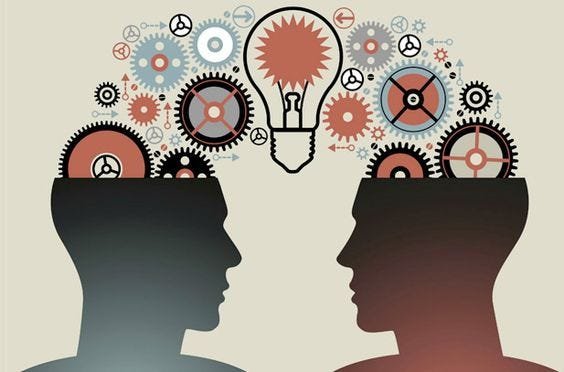Every day, people are faced with countless decisions, ranging from trivial choices like what to have for breakfast to life-changing ones such as choosing a career path or where to live. The process of decision-making is a complex and fascinating aspect of human psychology. Understanding how we make decisions can offer insight into our behavior, relationships, and even our overall happiness.
The act of making a choice often involves predicting future outcomes and assessing the potential risks and rewards of each option. Whether we’re aware of it or not, our brains constantly engage in a form of calculated reasoning. This process, which we go through almost unconsciously, defines much of our daily lives and interactions.
Intuitive vs. Analytical Thinking
Researchers in the field of psychology often distinguish between two primary modes of decision-making: intuitive thinking and analytical thinking. Intuitive thinking, also referred to as System 1 thinking, is fast, automatic, and often influenced by emotions or past experiences. This type of thinking requires little conscious effort, allowing us to make quick decisions in situations where we might not have all the necessary information.
On the other hand, analytical thinking, or System 2 thinking, is slow, deliberate, and requires more cognitive effort. When we engage in this type of reasoning, we carefully evaluate all possible options and outcomes before making a decision. While analytical thinking tends to be more accurate, it is also more time-consuming and mentally exhausting.
In many cases, individuals combine both intuitive and analytical approaches to make decisions, relying on intuition when time is of the essence, and taking a more analytical approach when the stakes are higher. For example, choosing what to wear in the morning might be an intuitive decision based on weather or personal style, while deciding whether to move to a new city for a job likely requires a thorough evaluation of long-term benefits and risks.
The Role of Uncertainty
Uncertainty is an unavoidable aspect of decision-making. No matter how much information we have, we can never predict the future with absolute certainty. As a result, we often make decisions based on probabilities, weighing the likelihood of different outcomes and hoping that the choice we make will lead to a favorable result.
Interestingly, humans are not always rational when it comes to managing uncertainty. Studies show that people tend to overestimate the risks of rare events and underestimate the risks of common occurrences. This phenomenon is known as “availability bias,” where individuals give more weight to information that is more readily available to them, such as recent experiences or dramatic news stories, rather than basing decisions on objective data.
Moreover, our attitudes toward risk can vary depending on the context. Some people are naturally more risk-averse, preferring to avoid uncertainty, while others thrive on taking chances. Risk tolerance often depends on individual personality traits, but it can also be influenced by environmental factors, social norms, and past experiences.
The Influence of Emotion
Emotion plays a critical role in decision-making. While we might like to think that we are rational beings, our choices are often swayed by how we feel in the moment. Positive emotions like excitement or optimism can make us more willing to take risks, while negative emotions like fear or anxiety can lead to more cautious, risk-averse behavior.
For instance, someone who feels confident and hopeful might be more inclined to bet on a new venture, even if it involves considerable uncertainty. In contrast, someone who is feeling insecure or stressed may be less likely to embrace new opportunities, opting instead for safer, more predictable paths.
Additionally, emotions from unrelated situations can spill over into the decision-making process. This effect, known as “emotional carryover,” occurs when feelings from one experience impact how we approach subsequent decisions, even when those decisions are unrelated to the original source of the emotion. For example, a frustrating commute to work might lead to poor decision-making throughout the day because the emotional residue from that experience clouds judgment.
Cognitive Biases in Decision-Making
Beyond emotions, a range of cognitive biases can influence our choices. Cognitive biases are systematic patterns of deviation from rationality in judgment, often resulting from our brain’s attempt to simplify information processing. While these biases can sometimes lead to efficient decision-making, they can also result in errors.
One well-known bias is “confirmation bias,” where individuals tend to seek out information that supports their preexisting beliefs and ignore evidence that contradicts them. This can be particularly problematic when making significant life choices, as it prevents individuals from considering alternative viewpoints or objectively evaluating all available information.
Another bias, the “anchoring effect,” occurs when people rely too heavily on the first piece of information they encounter (the anchor) when making decisions. Even when presented with new information, individuals often fail to adjust their judgments sufficiently, remaining tied to the initial reference point.
Improving Decision-Making Skills
While some factors influencing decision-making are beyond our control, there are strategies to improve the quality of our choices. One approach is to slow down the decision-making process, allowing for more thoughtful analysis and reducing the influence of emotions and biases. Taking time to gather more information, consider multiple perspectives, and weigh the pros and cons of each option can lead to more informed and rational decisions.
Another useful strategy is to practice mindfulness, which involves becoming more aware of our thoughts, emotions, and reactions in the present moment. By developing mindfulness skills, we can learn to recognize when emotions or cognitive biases are influencing our decisions and take steps to counteract their effects.
In the end, while decision-making will always involve some level of uncertainty, understanding the psychological mechanisms behind it can help us make choices that align more closely with our goals and values. Whether it’s a small everyday choice or a significant life decision, improving our decision-making skills can have a profound impact on our overall well-being.







